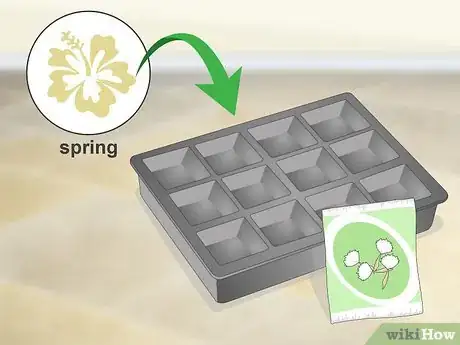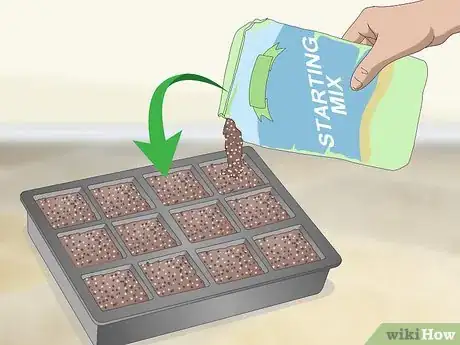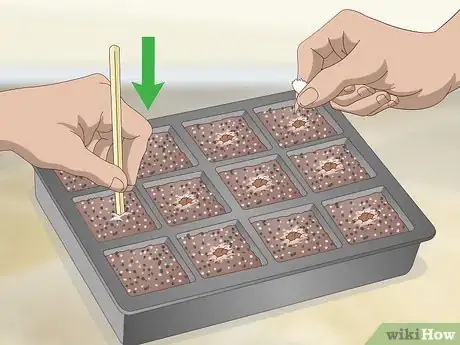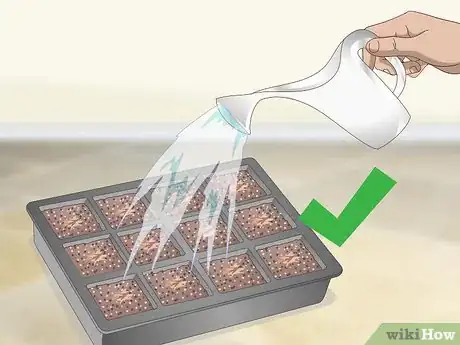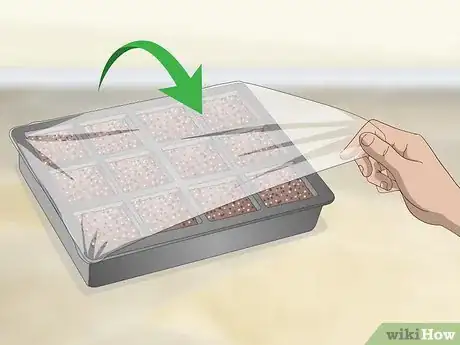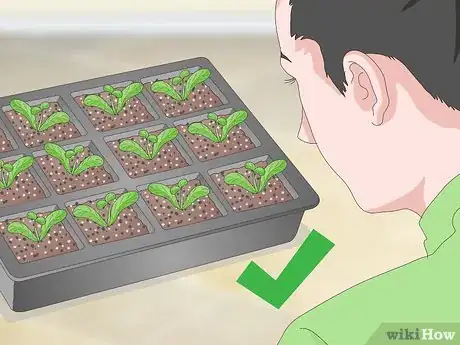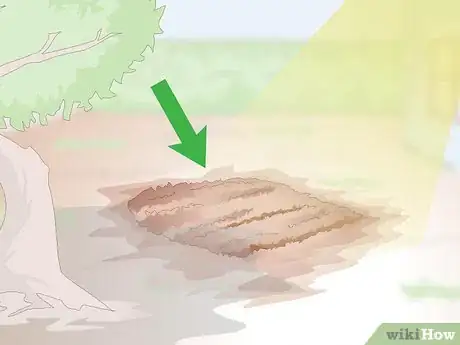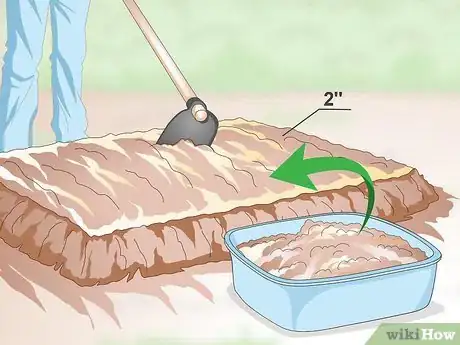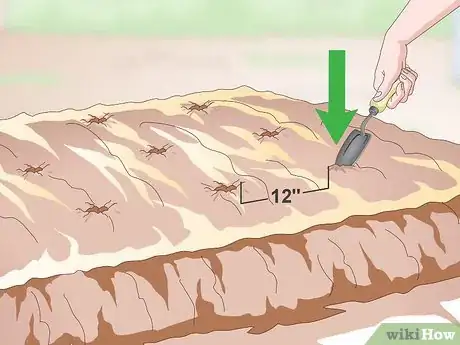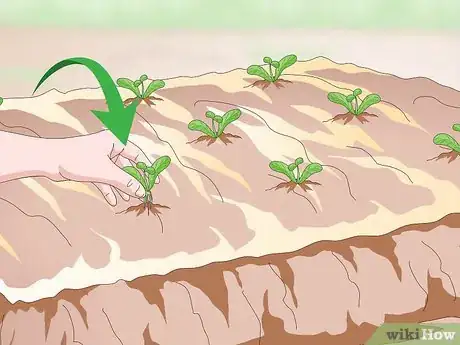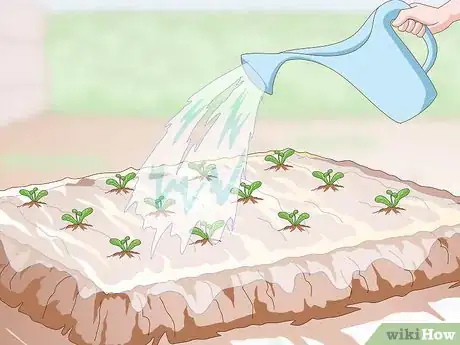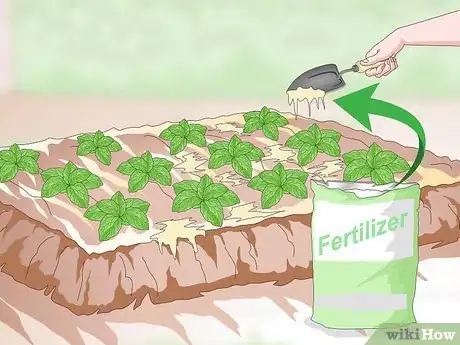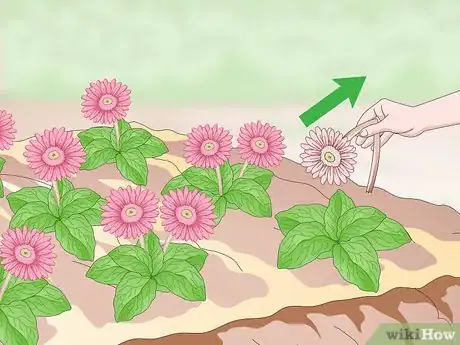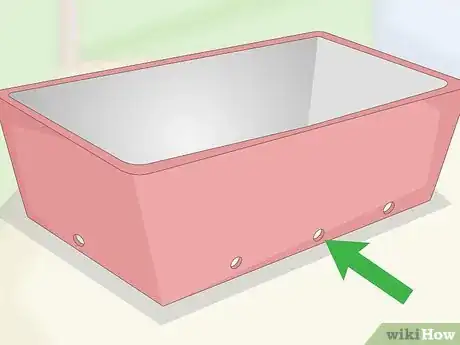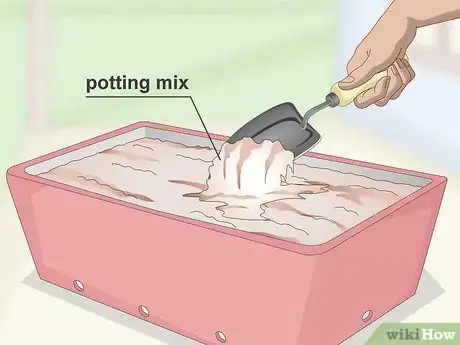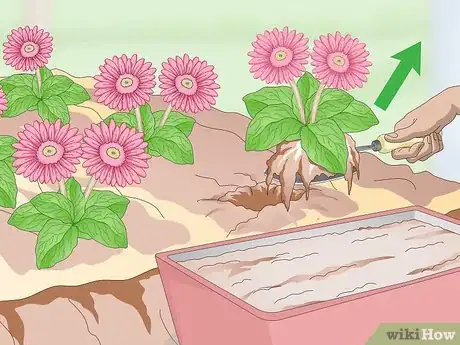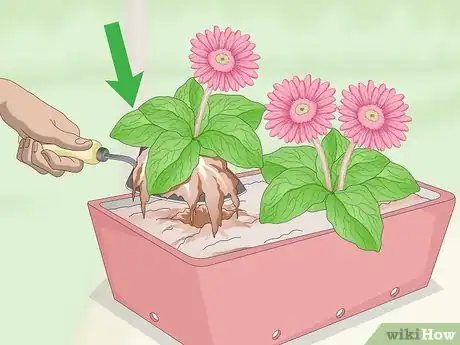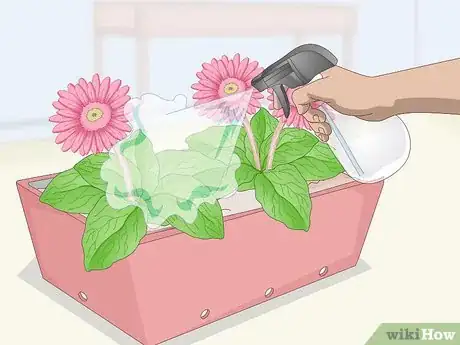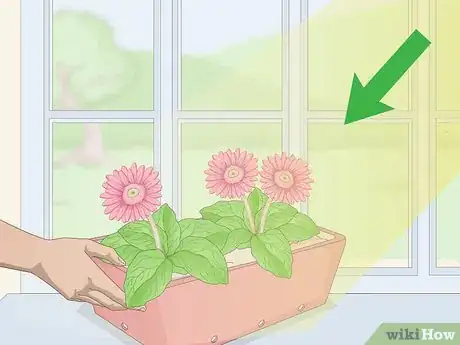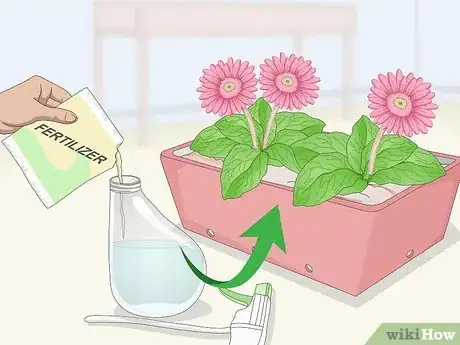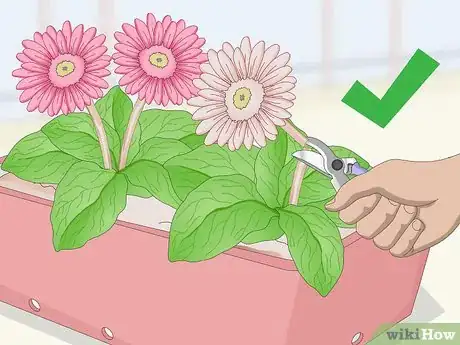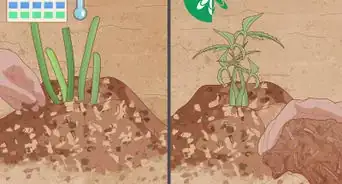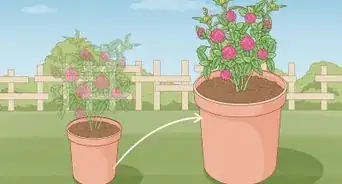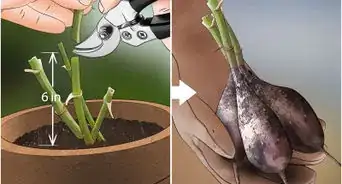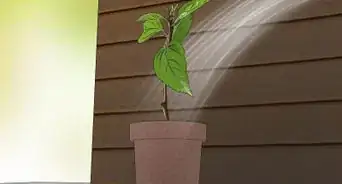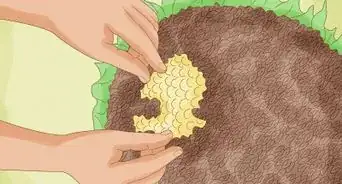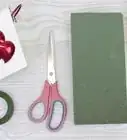This article was co-authored by Lauren Kurtz. Lauren Kurtz is a Naturalist and Horticultural Specialist. Lauren has worked for Aurora, Colorado managing the Water-Wise Garden at Aurora Municipal Center for the Water Conservation Department. She earned a BA in Environmental and Sustainability Studies from Western Michigan University in 2014.
wikiHow marks an article as reader-approved once it receives enough positive feedback. This article received 18 testimonials and 92% of readers who voted found it helpful, earning it our reader-approved status.
This article has been viewed 294,098 times.
Gerbera daisies are plants with bright, large, and colorful flowers. In warmer climates, gerbera daisies can be grown in the garden as perennials, but in cooler climates they're grown outdoors as annuals. Gerbera daisies also grow well in containers. This is convenient because you can bring the flowers in when it gets too cold. The trick with caring for gerbera daisies is providing the right amount of water for them to flourish.
Steps
Germinating the Seeds
-
1Aim to start the seeds indoors in early spring. Gerbera daisies can’t be planted outside until the frost is done and the soil has started to warm. To give the seedlings a head start, you can start the seeds inside before that so they’ll be ready for transplanting in late spring or early summer.
- Starting the seeds indoors early will also help to ensure that you get blooms this growing season.
-
2Fill a seed tray with a seed starting mix. Seed starting mix is a soilless potting mix that’s lighter than typical potting soil, so it’s better for germinating seeds. When the tray has been filled, use a spray bottle to moisten the mix in each cell. You can also make your own seed starting medium by combining equal parts:[1]
- Vermiculite
- Perlite
- Peat moss
Advertisement -
3Plant the seeds. Use the sharpened tip of a pencil or a toothpick to poke a hole in the center of the medium in each seed cell. The hole should be about 1⁄4 inch (6.4 mm) deep. Drop a seed in each hole with the pointed end facing down. The top of the seed should be just below the soil line. Pack the medium around the hole to cover the seed.[2]
-
4Water the seeds. Use a mister or small watering can to moisten the potting medium and help settle the seeds. As the seeds germinate, water as necessary to keep the soil slightly moist but not soggy.[3]
-
5Cover the tray with plastic. You can place a seed starter dome over the tray, or use a sheet of plastic wrap to cover the top. This will keep the seeds warm and keep moisture in the soil as the seeds germinate. You can remove the plastic in 2 to 3 weeks once the seeds have sprouted.[4]
- You won’t have to water as often when the plastic is on the tray, but may have to water daily to keep the medium moist once the plastic comes off.
-
6Place the seeds somewhere bright. Choose a bright windowsill or other area where the seeds will get about 8 hour of indirect light every day. The bright light and plastic will also keep the seeds warm and encourage germination.[5]
Transplanting Gerbera Daisies to the Garden
-
1Wait for the daisies to develop two sets of leaves. After the seeds have germinated, the gerbera daisy seedlings will continue to grow. The seedlings aren't ready to be transplanted outside until they’ve grown two sets of leaves (four leaves in total), and the soil has started to warm in the late spring or early summer.
- Even if the seedlings have two sets of leaves, don’t transplant them until the threat of frost has past.[6]
-
2Choose a location with morning sun and afternoon shade. Gerbera daisies are native to South Africa, so they don’t tend to like temperatures above 70 °F (21 °C). Because of this, it’s important to keep them out of the hot afternoon sun. They also like a lot of light, so the ideal location is somewhere that’s bright and sunny in the morning but protected from direct sun in the afternoon.[7]
-
3Amend the soil with compost. Gerbera daisies are particularly susceptible to rot if they're exposed to too much moisture. You can help improve soil drainage by tilling 2 inches (5.1 cm) of compost into the garden bed before planting. This will also enrich the soil and encourage better blooms.[8]
- Instead of compost, you can use peat or some other organic material.
- In areas with soil that has a very high clay content, consider amending the soil with sand as well to improve drainage. Otherwise, you can plant the daisies in containers.
-
4Dig holes for the seedlings. Use your hand or a spade to dig holes that are just deep and wide enough for the root ball. If you plant the daisies too deep in the soil, the crowns will rot. The holes should be spaced 12 to 18 inches (30 to 46 cm) apart to allow adequate airflow between the plants.[9]
-
5Plant the daisies in the soil. Gently remove the seedlings from the seed trays and place one seedling in each hole. Cover the root ball with soil and use your hands to gently firm the soil around the roots to secure the seedling in place.
-
6Water the seedlings thoroughly to set them in the soil. Water the soil around the seedlings to avoid getting the plants wet. As the plants grow, water them deeply once a week to keep the soil evenly moist but not soggy. Avoid getting water on the blooms or leaves, as this can lead to rot.
- Always water gerbera daisies in the morning so excess water will dry during the day.[10]
-
7Fertilize the daisies monthly. It takes a great deal of energy to produce large and beautiful flowers, and you can help the daisies by providing regular nutrients. Once a month during spring, summer, and early fall, add an all-purpose liquid fertilizer to the water before watering the plants.[11]
-
8Remove dead flowers to encourage new blooms. As the flowers bloom, watch them carefully so that you can snip them off as they start to wilt. Use sterilized garden shears to trim off dying flowers and leaves. This will encourage the plant to grow more flowers.[12]
- To keep from having to remove spent blooms, you can instead cut blooms when they’re fresh and bring them indoors. If you keep the flowers in water, they should last for several days.
Growing Potted Gerbera Daisies Indoors
-
1Choose a container with good drainage. The most important thing when growing gerbera daisies in pots is to choose a container with lots of drainage holes. Choose the smallest pot possible so you can easily move the plant outside as the weather allows. Growing gerbera daisies in pots is ideal if you:[13]
- Live in a cooler climate with cold fall and winter months
- Live in a rainy climate where the plant will get too much water in the garden
- Live in a climate where the relative humidity is often over 65 percent
- Have high-clay soil that doesn’t drain well
-
2Fill the container with a light potting mix. The ideal soil for gerbera daisies is a well-draining and fertile soil, such as a potting mix with lots of peat, perlite, or vermiculite mixed in. Fill the container and then moisten the soil with water using a mister.[14]
-
3Dig up the daisies from the garden. If you're moving the plant from the garden to a container to overwinter it, use a spade to gently dig the soil around the roots to loosen them from the ground. When the root have been loosened, hold the plant by the base of the grow and gently lift it from the soil.
-
4Plant the daisy in the pot. Use a spade to dig a hole in the soil. The hole should be just large enough to accommodate the root ball. Transplant the daisy from the garden or the seed tray (if you're moving seedlings directly into pots) to the container and cover the roots with soil. Use your hands to gently pack the soil around the roots.
-
5Water the plant every 3 to 5 days. Gerbera daisies like soil that’s evenly moist but never soggy or wet. A good test is to stick your finger 1 inch (2.5 cm) into the soil. If the soil feels dry, water the plant thoroughly. Otherwise, leave it for another day or two.[15]
- Gerbera daisies tend to need less water during the winter months, but never let the soil dry out completely.
-
6Place the pot where it will get morning sun. The ideal temperature for gerbera daisies is around 70 °F (21 °C), so you don’t want them in direct afternoon sun. To provide them with enough light, find a window that gets lots of direct morning sun, but that’s shaded in the afternoon and only gets indirect light later in the day.[16]
- In the warmer months during spring and summer, you can leave the potted gerbera daisy outside in an area with similar lighting conditions.
-
7Fertilize the plant monthly during growing periods. The plants will need additional nutrients in spring and summer when they're actively growing and producing flowers. Every 30 days, dissolve a 15-5-15 fertilizer in the water before watering the plant to feed the daisies.[17]
-
8Deadhead old blooms. When the flowers on the plant start to wilt and die, remove them with clean gardening shears. This will redirect the plant’s energy and encourage new flowers. You should also trim off dead leaves and foliage as they begin to wilt and brown.[18]
Expert Q&A
Did you know you can get expert answers for this article?
Unlock expert answers by supporting wikiHow
-
QuestionI have many existing plants that have been dug up. How long can they remain unplanted?
 Lauren KurtzLauren Kurtz is a Naturalist and Horticultural Specialist. Lauren has worked for Aurora, Colorado managing the Water-Wise Garden at Aurora Municipal Center for the Water Conservation Department. She earned a BA in Environmental and Sustainability Studies from Western Michigan University in 2014.
Lauren KurtzLauren Kurtz is a Naturalist and Horticultural Specialist. Lauren has worked for Aurora, Colorado managing the Water-Wise Garden at Aurora Municipal Center for the Water Conservation Department. She earned a BA in Environmental and Sustainability Studies from Western Michigan University in 2014.
Professional Gardener
-
QuestionHow close together can daisies be planted?
 Lauren KurtzLauren Kurtz is a Naturalist and Horticultural Specialist. Lauren has worked for Aurora, Colorado managing the Water-Wise Garden at Aurora Municipal Center for the Water Conservation Department. She earned a BA in Environmental and Sustainability Studies from Western Michigan University in 2014.
Lauren KurtzLauren Kurtz is a Naturalist and Horticultural Specialist. Lauren has worked for Aurora, Colorado managing the Water-Wise Garden at Aurora Municipal Center for the Water Conservation Department. She earned a BA in Environmental and Sustainability Studies from Western Michigan University in 2014.
Professional Gardener
-
QuestionHow often should the daisy plant be watered?
 Community AnswerGerbera daisies will need water often. Water regularly in spring through fall. On a hot day in summer, water heavily. In the winter, water sparingly.
Community AnswerGerbera daisies will need water often. Water regularly in spring through fall. On a hot day in summer, water heavily. In the winter, water sparingly.
References
- ↑ https://www.todayshomeowner.com/how-to-grow-gerbera-daisies-from-seed/
- ↑ https://www.todayshomeowner.com/how-to-grow-gerbera-daisies-from-seed/
- ↑ https://www.gerbera.org/care/gerbera-daisy-plant-care/
- ↑ https://www.todayshomeowner.com/how-to-grow-gerbera-daisies-from-seed/
- ↑ https://plantcaretoday.com/gerbera-daisy-care.html
- ↑ https://www.todayshomeowner.com/how-to-grow-gerbera-daisies-from-seed/
- ↑ http://www.birdsandblooms.com/blog/growing-gerbera-daisies/
- ↑ http://gardeningsolutions.ifas.ufl.edu/plants/ornamentals/gerbera-daisy.html
- ↑ http://gardeningsolutions.ifas.ufl.edu/plants/ornamentals/gerbera-daisy.html
- ↑ https://plantcaretoday.com/gerbera-daisy-care.html
- ↑ http://gardeningsolutions.ifas.ufl.edu/plants/ornamentals/gerbera-daisy.html
- ↑ https://www.gerbera.org/care/gerbera-daisy-plant-care/
- ↑ https://www.sundaygardener.net/growing-gerbera-daisies-indoors/
- ↑ https://www.todayshomeowner.com/how-to-grow-gerbera-daisies-from-seed/
- ↑ https://plantcaretoday.com/gerbera-daisy-care.html
- ↑ https://plantcaretoday.com/gerbera-daisy-care.html
- ↑ https://www.sundaygardener.net/growing-gerbera-daisies-indoors/
- ↑ https://plantcaretoday.com/gerbera-daisy-care.html
About This Article
To grow gerbera daisies, start your seeds indoors in a seed tray during the early spring, and then transplant the seedlings once they have 2 leaves. Plant them in an area with morning sun and afternoon shade, and add compost to the soil to help them grow. Once they’re in the ground, water them thoroughly every 3-5 days, and apply fertilizer to the soil once per week to keep them healthy. When the daisies have bloomed for the year, remove any dead flowers as they start to wilt to prevent diseases. For tips from our Horticulturist reviewer on how to grow potted gerbera daisies indoors, read on!
